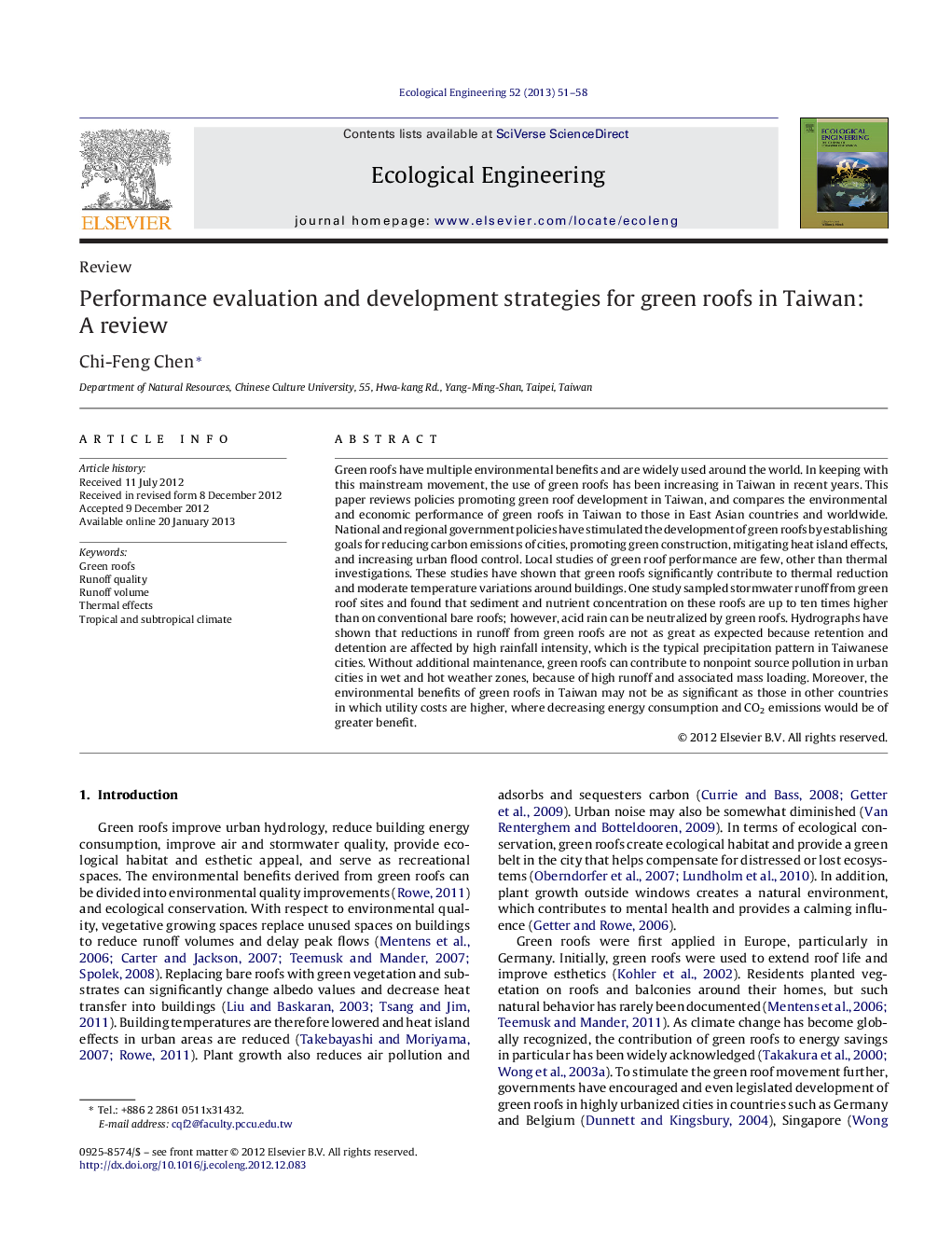| Article ID | Journal | Published Year | Pages | File Type |
|---|---|---|---|---|
| 4389735 | Ecological Engineering | 2013 | 8 Pages |
Green roofs have multiple environmental benefits and are widely used around the world. In keeping with this mainstream movement, the use of green roofs has been increasing in Taiwan in recent years. This paper reviews policies promoting green roof development in Taiwan, and compares the environmental and economic performance of green roofs in Taiwan to those in East Asian countries and worldwide. National and regional government policies have stimulated the development of green roofs by establishing goals for reducing carbon emissions of cities, promoting green construction, mitigating heat island effects, and increasing urban flood control. Local studies of green roof performance are few, other than thermal investigations. These studies have shown that green roofs significantly contribute to thermal reduction and moderate temperature variations around buildings. One study sampled stormwater runoff from green roof sites and found that sediment and nutrient concentration on these roofs are up to ten times higher than on conventional bare roofs; however, acid rain can be neutralized by green roofs. Hydrographs have shown that reductions in runoff from green roofs are not as great as expected because retention and detention are affected by high rainfall intensity, which is the typical precipitation pattern in Taiwanese cities. Without additional maintenance, green roofs can contribute to nonpoint source pollution in urban cities in wet and hot weather zones, because of high runoff and associated mass loading. Moreover, the environmental benefits of green roofs in Taiwan may not be as significant as those in other countries in which utility costs are higher, where decreasing energy consumption and CO2 emissions would be of greater benefit.
